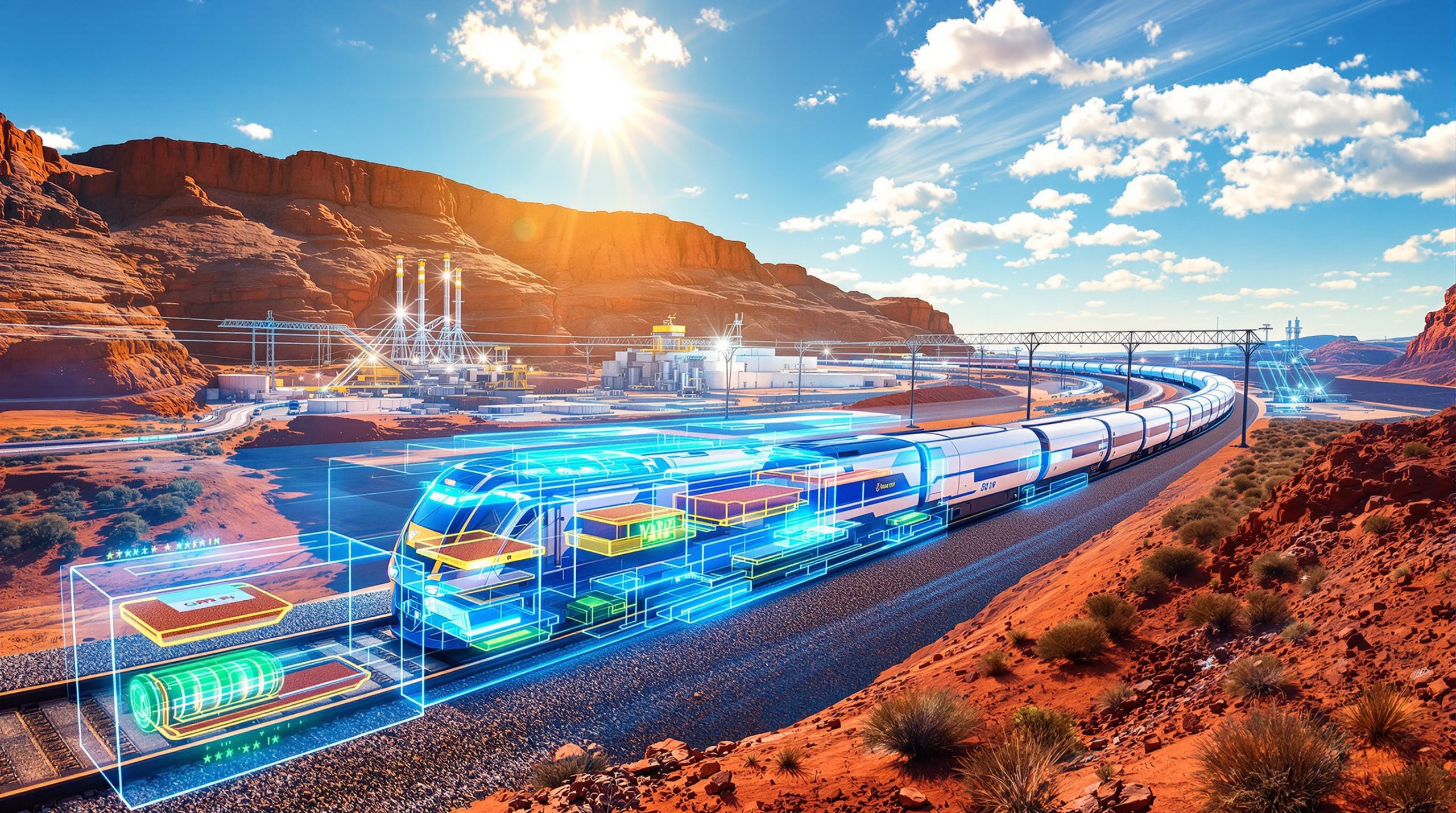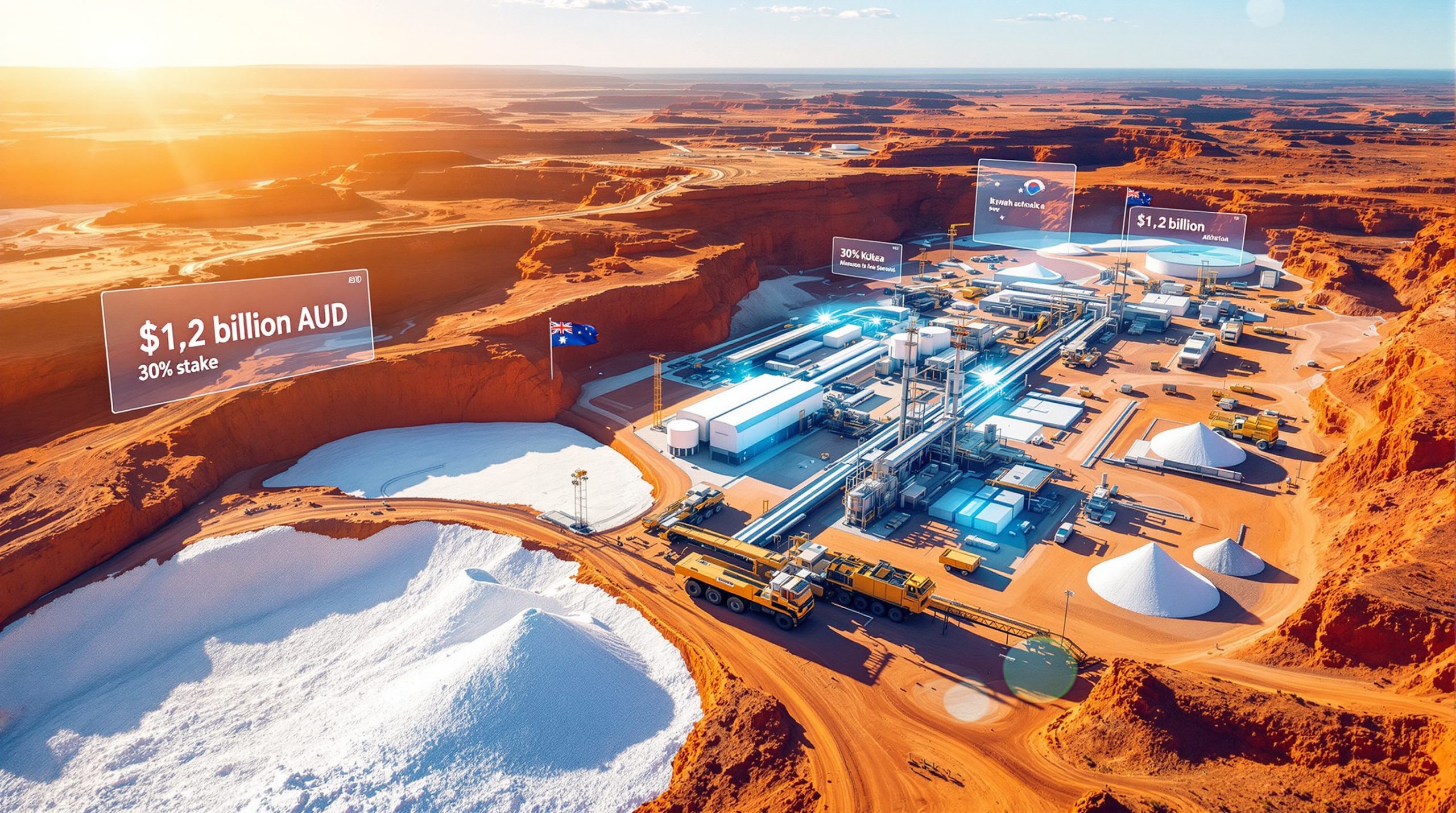What Are Electric Locomotives and Why Are They Transforming Australian Rail?
Electric locomotives represent the latest evolution in rail transportation technology, harnessing electrical power systems instead of conventional diesel engines to propel heavy freight and passenger services across demanding Australian terrain. These sophisticated systems draw energy through overhead catenary wires, third rail configurations, or advanced battery storage technologies, delivering enhanced operational efficiency while significantly reducing environmental impacts compared to traditional diesel alternatives.
Australia's mining sector stands at the forefront of this technological transformation, with BHP recently launching the country's first battery-electric locomotives in partnership with Wabtec. These FLXDrive models feature sophisticated 7-megawatt-hour battery systems specifically engineered for the extreme conditions found in Western Australia's Pilbara region, where temperatures soar and dust poses constant operational challenges.
Key Components of Modern Electric Locomotive Systems
Electric locomotives in Australia operate through three distinct power delivery mechanisms, each offering unique advantages for specific operational requirements. Overhead catenary systems supply alternating current through suspended wire networks, while direct current third rail configurations provide power through trackside conductors. Furthermore, the most recent innovation involves cutting-edge advanced lithium battery tech that eliminate infrastructure dependency while maintaining zero-emission operation.
The regenerative braking technology integrated into these systems captures kinetic energy during deceleration and downhill operations, converting it into electrical power that feeds back into battery storage or grid systems. This capability proves particularly valuable in mountainous mining regions where frequent braking occurs during loaded descents from extraction sites to processing facilities or export terminals.
How Do Electric Locomotives Compare to Diesel Systems in Australian Mining?
The operational advantages of electric systems become especially pronounced in Australia's challenging mining environments. Electric locomotives deliver immediate torque availability from startup, maintaining consistent power output regardless of altitude variations or extreme temperature fluctuations that commonly affect diesel engine performance in regions like the Pilbara.
BHP's recent deployment demonstrates the practical viability of electric locomotive technology in one of the world's most demanding operational environments. The FLXDrive locomotives undergo extensive trials on iron ore rail routes connecting Pilbara mines to Port Hedland export infrastructure, providing real-world performance data under extreme conditions.
Efficiency Metrics: Electric vs Diesel Performance
| Performance Factor | Electric Locomotives | Diesel Locomotives |
|---|---|---|
| Direct Emissions | Zero at point of operation | Significant CO2/NOx output |
| Torque Delivery | Instantaneous maximum | Gradual power buildup |
| Operational Range | Battery capacity limited | Fuel tank dependent |
| Maintenance Access | Simplified electrical systems | Complex combustion components |
| Noise Generation | Substantially reduced | High acoustic output |
Tim Day, Western Australia Iron Ore asset president, characterizes the electric locomotive deployment as marking the beginning of an important trial to understand how this technology can help reduce diesel consumption, lower associated operational greenhouse gas emissions, and improve efficiency across rail networks. The trial results will provide crucial data for expanding electric locomotive adoption throughout Australian mining operations.
Regenerative Braking Technology Benefits
Modern electric locomotives maximise energy efficiency through sophisticated regenerative braking mechanisms that recover substantial amounts of kinetic energy during operational cycles. This recovered energy extends operational range while reducing overall power consumption requirements, particularly valuable in heavy-haul mining applications where loaded trains frequently navigate significant elevation changes.
Peter Thomas, Wabtec's regional senior vice president for ANZ and SEA, emphasises that FLXDrive locomotives combine advanced battery technology with regenerative braking to deliver high efficiency and lower emissions in demanding environments. The Pilbara's iron ore transport routes, with their substantial elevation changes between mining sites and port facilities, provide ideal conditions for demonstrating regenerative braking effectiveness.
Which Australian States Lead Electric Rail Infrastructure Development?
Queensland maintains Australia's most extensive electrified rail network, primarily serving coal transport corridors that connect major mining regions to export terminals. This comprehensive system utilises 25 kV AC electrification standards aligned with international heavy-haul railway specifications, enabling efficient movement of substantial tonnages across long distances.
The state's strategic focus on electric rail infrastructure reflects the economic importance of coal exports and the operational advantages electric systems provide for high-frequency, high-tonnage transport requirements. Aurizon operates sophisticated electric locomotive fleets throughout this network, handling substantial coal volumes while maintaining exceptional reliability standards essential for export operations.
Queensland's Electric Rail Network Expansion
Queensland's electric rail development programme transformed freight operations across multiple coal-producing regions, establishing the foundation for current heavy-haul electric operations. The network's design prioritises operational efficiency and capacity maximisation, crucial factors for maintaining Australia's position as a leading coal exporter in global markets.
In addition, the Queensland system demonstrates the scalability of electric rail infrastructure for mining applications, providing valuable insights for potential expansion into other Australian mining regions. The operational success achieved in Queensland's coal transport corridors offers compelling evidence for electric locomotive adoption in similar heavy-haul mining applications.
Urban Electric Systems Across Major Cities
Melbourne pioneered Australian electric rail adoption with its 1,500-volt DC suburban network, establishing operational precedents that continue informing contemporary electric rail developments. Sydney operates comparable DC systems for metropolitan passenger services, while Perth utilises 25 kV AC infrastructure for suburban connections, demonstrating the versatility of electric rail technology across different urban contexts.
These urban implementations provide technical expertise and operational experience that benefits mining sector electric vehicles in mining deployments. The maintenance practices, power management systems, and operational protocols developed for urban electric rail networks transfer directly to mining applications, accelerating implementation timelines and reducing technical risks.
What Makes Battery-Electric Locomotives Revolutionary for Mining Operations?
Battery-electric locomotives represent a paradigm shift for Australian mining operations, combining zero-emission capabilities with operational flexibility that eliminates dependence on expensive electrification infrastructure. These systems prove particularly valuable in remote mining regions where traditional catenary installation remains economically prohibitive due to vast distances and challenging terrain.
The 7-megawatt-hour battery capacity featured in BHP's FLXDrive locomotives enables substantial operational range while maintaining the power requirements necessary for heavy-haul mining applications. This energy storage capability allows sustained operations across significant distances without requiring intermediate charging infrastructure, crucial for remote mining operations.
Technical Specifications of Modern BEL Systems
Contemporary battery-electric locomotive systems feature advanced lithium-ion battery technology that provides rapid charging capabilities and extended operational periods between charging cycles. The battery management systems monitor individual cell performance, temperature regulation, and charge distribution to optimise performance and extend battery lifecycle under demanding operational conditions.
However, Wabtec's FLXDrive locomotives incorporate purpose-built designs specifically engineered for extreme environmental conditions, including the high temperatures, dust exposure, and heavy loading requirements characteristic of Pilbara mining operations. These design considerations ensure reliable operation while maintaining the efficiency advantages that make electric locomotives in Australia attractive for mining applications.
Regenerative Braking Integration in BEL Design
Battery-electric systems optimise energy efficiency through sophisticated regenerative braking integration that captures substantial energy during downhill operations and deceleration phases. This recovered energy feeds directly into onboard battery storage systems, extending operational range and reducing overall energy consumption requirements for mining duty cycles.
The integration of regenerative braking with battery storage creates a closed-loop energy management system that maximises efficiency while minimising external power requirements. This capability proves especially valuable in mining operations where trains regularly navigate substantial elevation changes between extraction sites and processing or export facilities.
How Are Major Mining Companies Implementing Electric Locomotive Technology?
Australia's major mining operations increasingly recognise electric locomotive technology as essential for achieving sustainability objectives while maintaining operational efficiency standards. Consequently, the mining industry evolution reflects BHP's partnership with Wabtec, demonstrating the collaborative approach necessary for successful electric locomotive implementation, combining mining operational expertise with advanced locomotive manufacturing capabilities.
The implementation process involves comprehensive system integration that addresses operational requirements, maintenance protocols, and performance optimisation for specific mining applications. This collaborative approach ensures that electric locomotive systems meet the demanding performance standards required for continuous mining operations while delivering the environmental benefits that drive adoption decisions.
Pilbara Region Electric Locomotive Deployment
The Pilbara's extreme operational environment provides the ultimate proving ground for electric locomotive durability and performance capabilities. Temperatures exceeding 50°C, constant dust exposure, and heavy loading requirements challenge every aspect of locomotive design and operational systems, making successful Pilbara deployment a strong indicator of broader applicability.
BHP's iron ore operations in the Pilbara region handle substantial tonnages across extensive rail networks, creating ideal conditions for demonstrating electric locomotive capabilities in demanding mining applications. For instance, the operational data generated through these trials will inform future electric locomotive deployments across Australian mining operations.
Partnership Models for Electric Rail Implementation
Successful electric locomotive deployments typically involve collaborative partnerships between mining companies, locomotive manufacturers, and technology providers. These relationships ensure comprehensive support for complex system integration, ongoing maintenance requirements, and performance optimisation throughout the locomotive lifecycle.
The BHP-Wabtec partnership exemplifies this collaborative approach, combining BHP's extensive mining operational expertise with Wabtec's advanced locomotive manufacturing capabilities and electric propulsion technology. This partnership model provides the technical depth and operational support necessary for successful electric locomotive implementation in challenging mining environments.
What Environmental Benefits Do Electric Locomotives Deliver?
Electric locomotives eliminate direct emissions at the point of operation, contributing significantly to improved air quality in mining regions and surrounding communities. When powered by renewable energy integration, these systems achieve near-zero carbon footprints throughout their operational lifecycle, aligning with broader sustainability objectives across the mining sector.
The environmental advantages extend beyond emissions reduction to include substantial noise pollution reduction compared to diesel alternatives. Electric locomotives operate at significantly lower acoustic levels, reducing environmental impact on local communities and wildlife while improving working conditions for railway personnel.
Carbon Footprint Reduction Potential
| Environmental Factor | Electric Locomotives | Diesel Locomotives |
|---|---|---|
| Direct Emissions | Zero at operation point | High CO2/NOx output |
| Particulate Matter | None | Significant levels |
| Noise Pollution | 65-75 decibels | 85-95 decibels |
| Fuel Spillage Risk | Eliminated | Ongoing concern |
| Air Quality Impact | Neutral | Negative |
The elimination of direct emissions provides immediate environmental benefits, while the potential for renewable energy integration creates pathways for achieving carbon neutrality in rail transport operations. This dual benefit addresses both immediate air quality concerns and longer-term climate change objectives that increasingly influence mining company operational decisions.
Integration with Renewable Energy Systems
Electric locomotive operations align seamlessly with Australia's expanding renewable energy infrastructure, creating opportunities for truly sustainable transportation systems. Solar and wind power generation can directly supply rail operations, establishing closed-loop sustainability systems that minimise external energy dependencies while reducing operational costs.
Furthermore, the integration potential extends beyond simple power supply to include smart grid capabilities where locomotives function as mobile energy storage systems. During peak renewable generation periods, electric locomotives can store excess energy for use during low generation periods, optimising renewable energy utilisation while maintaining operational flexibility.
Which Technologies Are Driving Electric Locomotive Innovation?
Advanced control systems, improved battery chemistry, and sophisticated power management technologies continue revolutionising electric locomotive capabilities while addressing traditional operational limitations. These innovations enable enhanced operational flexibility while expanding the range of applications where electric locomotives provide advantages over diesel alternatives.
Moreover, AI-driven mining efficiency integration enables predictive maintenance strategies that minimise downtime while optimising performance parameters for specific operational conditions. Machine learning algorithms analyse operational data to identify potential issues before they impact operations, ensuring maximum availability for critical mining transport requirements.
Smart Grid Integration Capabilities
Modern electric locomotives function as mobile energy storage and distribution systems capable of bidirectional power flow with electrical grid systems. This capability adds value beyond transportation services by providing grid stabilisation and energy storage services during peak demand periods or renewable energy generation fluctuations.
The smart grid integration potential creates additional revenue opportunities for mining operations while contributing to electrical grid stability in remote regions where mining operations often represent significant energy consumers. This dual functionality enhances the economic case for electric locomotive adoption while supporting broader energy infrastructure development.
Predictive Maintenance and IoT Integration
Internet of Things sensors throughout electric locomotive systems enable comprehensive monitoring of operational parameters, component performance, and environmental conditions. This real-time data collection supports predictive maintenance strategies that optimise component lifecycle while minimising unplanned downtime.
The predictive maintenance capabilities prove especially valuable in remote mining operations where unplanned maintenance can result in substantial operational disruptions. Advanced analytics identify component degradation patterns, enabling proactive maintenance scheduling that maintains operational continuity while optimising maintenance resource allocation.
What Challenges Face Electric Locomotive Adoption in Australia?
Infrastructure investment requirements represent the primary barrier to widespread electric locomotive adoption across Australian mining operations. The substantial distances between mining sites and the high capital costs associated with electrification infrastructure create significant financial obstacles that must be balanced against long-term operational benefits.
Battery-electric locomotive technology addresses many infrastructure concerns by eliminating the need for catenary systems, but charging infrastructure requirements and battery replacement costs create alternative financial considerations. The economic analysis must account for total lifecycle costs including battery degradation, replacement schedules, and charging infrastructure development.
Infrastructure Investment Requirements
Traditional rail electrification requires substantial upfront investment in overhead catenary systems, substations, and supporting electrical infrastructure. These costs can reach millions of dollars per kilometre for heavy-haul applications, creating significant capital barriers for mining operations with extensive rail networks.
However, battery-electric locomotives reduce infrastructure requirements but create alternative investment needs in charging facilities and battery replacement programmes. The economic optimisation involves balancing infrastructure costs against operational savings while considering the operational flexibility benefits that battery systems provide.
Geographic and Climatic Considerations
Australia's extreme weather conditions and vast operational distances create unique challenges for electric locomotive implementation. Temperature extremes affect battery performance and lifecycle, while remote locations complicate maintenance access and technical support requirements essential for reliable electric locomotive operations.
The Pilbara region's operational environment exemplifies these challenges, with temperatures exceeding 50°C and constant dust exposure creating demanding conditions for electrical systems. Successful operation in such environments demonstrates electric locomotives in Australia viability for other challenging Australian mining applications.
How Do Electric Locomotives Impact Australian Mining Economics?
Electric locomotive adoption influences mining economics through multiple pathways including reduced fuel costs, simplified maintenance requirements, and improved operational reliability. These factors combine to enhance overall mining operation profitability while supporting sustainability objectives that increasingly influence investment decisions and regulatory compliance.
The operational cost advantages accumulate over extended service periods, with electric locomotives typically demonstrating superior total cost of ownership compared to diesel alternatives over 15-20 year operational lifecycles. Energy cost stability also provides budget predictability advantages compared to volatile diesel fuel pricing.
Operational Cost Analysis
Electric locomotives eliminate diesel fuel costs while substituting electrical energy consumption that can be supplied through renewable sources or grid connections. The energy cost differential typically favours electric systems, especially when considering fuel transport costs to remote mining locations and price volatility associated with petroleum products.
Maintenance cost reductions result from simplified electric drivetrains compared to complex diesel engine systems requiring regular service intervals and component replacements. Electric motors require minimal routine maintenance while offering superior reliability and extended service lifecycles compared to combustion engine alternatives.
Return on Investment Calculations
While initial capital investment for electric locomotive systems typically exceeds diesel alternatives, the total cost of ownership analysis generally favours electric systems over extended operational periods. The investment payback period depends on operational intensity, energy costs, and maintenance savings achieved through electric system adoption.
Furthermore, the economic analysis must also consider environmental compliance costs and potential carbon pricing mechanisms that may favour low-emission transportation systems. Regulatory trends increasingly support electric transportation adoption through incentives and emissions reduction requirements that enhance electric locomotive economic attractiveness.
What Does the Future Hold for Electric Locomotives in Australia?
The trajectory for electric locomotives in Australia indicates accelerated implementation driven by technological advancement, environmental regulations, and economic incentives. Battery technology improvements and renewable energy expansion will further enhance the practical applications and economic attractiveness of electric rail systems across diverse mining operations.
Government policy initiatives supporting decarbonisation and sustainable transportation infrastructure create favourable conditions for electric locomotive deployment. Funding programmes and regulatory frameworks increasingly favour low-emission transportation technologies, providing additional economic incentives for mining companies considering electric locomotive adoption.
Emerging Battery Technology Developments
Next-generation battery technologies promise substantial improvements in energy density, charging speed, and operational lifecycle that will expand practical applications for battery-electric locomotives. Solid-state battery development and advanced lithium-ion chemistries offer potential for extended range and reduced charging downtime.
These technological advances will address current range limitations while reducing total cost of ownership through improved battery lifecycle and charging efficiency. The rapid pace of battery technology development suggests continued performance improvements that will enhance electric locomotive attractiveness for mining applications.
Government Policy and Regulatory Support
Australian government initiatives supporting renewable energy integration and emissions reduction create favourable policy environments for electric locomotive adoption. Carbon pricing mechanisms and emissions reduction targets provide economic incentives that improve electric locomotive investment returns while supporting broader sustainability objectives.
Regulatory trends indicate continued support for low-emission transportation technologies through funding programmes, tax incentives, and emissions reduction requirements. These policy frameworks create additional economic benefits that enhance the business case for electric locomotive adoption across Australian mining operations.
Disclaimer: The information contained in this article is based on current industry developments and publicly available sources as of November 2025. Performance projections and economic analyses are subject to variation based on specific operational conditions, technological developments, and market factors. Mining companies should conduct comprehensive feasibility studies before making electric locomotive investment decisions.
Ready to Invest in the Next Electric Mining Revolution?
Discovery Alert's proprietary Discovery IQ model delivers real-time alerts on significant ASX mining and technology discoveries, instantly empowering subscribers to identify actionable opportunities in emerging sectors like electric vehicle technology and sustainable mining innovations. Understand why major mineral discoveries can lead to significant market returns by exploring Discovery Alert's dedicated discoveries page, showcasing historic examples of exceptional outcomes, and begin your 30-day free trial today to position yourself ahead of the market.




